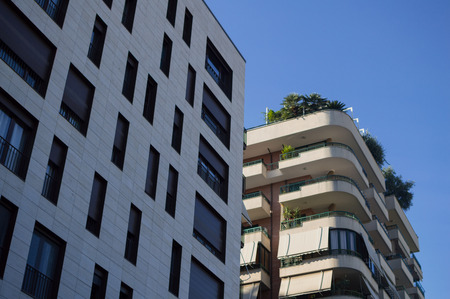1. Understanding the Solstice and British Outdoor Traditions
The solstice, marking either the longest or shortest day of the year, holds a special place in British culture, echoing through ancient customs and modern-day gatherings. Across the UK, the summer and winter solstices are not just astronomical events but are woven into the very fabric of local tradition. For centuries, communities have come together outdoors—whether on sprawling village greens, urban balconies, or private patios—to greet the turning of the seasons. From the mystical gatherings at Stonehenge to neighbourhood garden parties and rooftop feasts, Britons celebrate these pivotal moments by embracing nature and connecting with one another under open skies. The solstice invites reflection on the rhythms of time and inspires a seasonal spirit that encourages us to arrange our outdoor spaces thoughtfully, blending heritage with contemporary living. In this light, understanding how the solstice is observed in Britain lays the foundation for applying Feng Shui principles to patios and balconies, ensuring these cherished spaces harmonise with both tradition and the natural world.
Feng Shui Fundamentals for Patios and Balconies
Feng Shui, rooted in ancient Chinese philosophy, offers a thoughtful way to curate our outdoor environments—balancing energy (Qi) and harmonising with nature. This approach is not only timeless but also highly adaptable to contemporary British patios and balconies, no matter their size or setting. At its core, Feng Shui centres on the flow of Qi, the invisible life force believed to influence wellbeing and prosperity. By mindfully arranging your outdoor space, you can create an inviting atmosphere that resonates with the changing energies of the solstice.
Key Principles of Outdoor Feng Shui
Applying Feng Shui outdoors begins with understanding a few essential concepts:
| Principle | Description | British Adaptation |
|---|---|---|
| Qi (Energy Flow) | Ensuring free movement of energy throughout the space by avoiding clutter and allowing pathways for natural movement. | Keep patio walkways clear; arrange garden furniture to invite easy circulation. |
| Yin & Yang | Balancing contrasting elements: soft/hard, light/dark, quiet/activity. | Pair lush planters with stone paving; use soft lighting alongside sturdy benches. |
| The Five Elements | Incorporating wood, fire, earth, metal, and water for holistic harmony. | Add wooden seating, a fire pit or candles, terracotta pots, metal lanterns, and a small water feature or birdbath. |
| The Bagua Map | A tool for mapping energy zones related to aspects like health, family, and wealth. | Assign corners of your balcony to specific intentions—for example, place herbs in the ‘wealth’ area to symbolise growth. |
Melding Tradition with Modern British Living
You needn’t live in an ancient courtyard to benefit from these practices. Whether your outdoor nook overlooks rolling countryside or city rooftops, integrating Feng Shui principles can bring about a sense of balance that honours both tradition and present-day British life. For instance, a classic bistro set complemented by native British plants and gentle solar lights can weave together comfort and auspicious energy—making your patio or balcony a restorative retreat during the solstice and beyond.

3. Selecting and Placing Outdoor Furniture
Choosing and positioning outdoor furniture for your solstice celebration is more than a question of aesthetics; it’s a subtle art that draws on the wisdom of Feng Shui while embracing the practicalities and charm of British outdoor living. The solstice, marking a turning point in the natural cycle, invites us to refresh our spaces with intention—creating an environment where energy flows freely, fostering well-being and conviviality.
Consider the Scale and Material
When selecting furniture for patios or balconies—especially those typical of UK homes—opt for pieces that harmonise with the scale of your outdoor area. Compact bistro sets, weatherproof rattan chairs, or elegant wrought iron benches often suit modest gardens and urban terraces. Natural materials like wood or stone resonate with Feng Shui principles, grounding the space and inviting the restorative qualities of earth and nature into your home.
Arrangement for Positive Qi
Position seating so it faces towards open views, such as a garden bed or scenic vista, whenever possible. This not only encourages conversation but also ensures guests are greeted by uplifting sights rather than barriers. Avoid placing furniture with its back directly to entrances or pathways; instead, allow for a gentle curve or diagonal placement to support a welcoming atmosphere and facilitate the smooth circulation of Qi (energy) through the space.
Balance and Comfort
Balance is central in both traditional Feng Shui and contemporary British garden design. Distribute furniture evenly without overcrowding—leave ample room for movement to prevent stagnant energy. Integrate soft cushions in muted or nature-inspired tones for comfort and a subtle nod to seasonal colours. Where possible, incorporate round tables or curved edges to soften lines and encourage inclusivity during gatherings.
Adapting for Urban Living
For smaller balconies typical in city flats, foldable chairs or stackable stools maximise flexibility. A slimline bench positioned against a wall can create intimacy without sacrificing valuable floor space. Remember, less is often more: select just a few well-chosen pieces rather than filling every corner, allowing light and air to circulate—a principle both practical for British climates and aligned with harmonious energy flow.
A Personal Touch
Finally, infuse your arrangement with personal accents: perhaps a cherished lantern, a woven throw from the Lake District, or potted lavender echoing English meadows. These thoughtful additions not only enhance comfort but also root your solstice celebration firmly in local tradition, transforming your patio or balcony into an uplifting haven attuned to both ancient wisdom and modern British life.
4. Incorporating Natural Elements: Plants, Water, and Stone
When arranging patios and balconies for the solstice, weaving in natural elements not only pays homage to Feng Shui principles but also resonates with the British reverence for the outdoors. Thoughtful placement of native flora and tactile features like water and stone can transform an outdoor space into a sanctuary of tranquillity and renewed vitality.
Native British Plants for Balance and Energy
Integrating plants indigenous to the UK ensures harmony with local ecology while supporting the flow of positive energy (Qi). Choose species that thrive in your region’s microclimate, require minimal maintenance, and offer year-round interest. Below is a concise guide to recommended native plants and their Feng Shui benefits:
| Plant | Feng Shui Benefit | Placement Advice |
|---|---|---|
| English Lavender (Lavandula angustifolia) | Calms energy, promotes relaxation | Near seating areas or entrances |
| Hawthorn (Crataegus monogyna) | Protective, symbolises renewal | As a potted feature or screening plant |
| Bluebells (Hyacinthoides non-scripta) | Encourages serenity, supports wildlife | Borders or shaded corners |
| Heather (Calluna vulgaris) | Nourishes optimism, attracts pollinators | Pots near sunlit railings |
The Vital Flow of Water Features
A water feature—be it a petite fountain or bowl—symbolises wealth and renewal in Feng Shui. In Britain’s often compact outdoor spaces, choose understated designs that blend with surrounding greenery. Place water elements to the east or southeast of your patio or balcony to activate prosperity and encourage gentle movement of Qi without overwhelming the space.
The Enduring Strength of Stone
Stone anchors energy and offers a grounding counterpoint to lush planting. Opt for locally sourced pebbles or Yorkstone paving to maintain an authentic British touch. Arrange stones as stepping paths, low walls, or decorative clusters; these can delineate zones within the patio, encouraging mindful movement and inviting moments of pause during solstice gatherings.
Cohesive Placement for Solstice Harmony
To maximise tranquillity and vibrancy at solstice time, create gentle transitions between plant beds, water features, and stonework. Avoid clutter by maintaining clear sightlines from your indoor space outwards—this encourages an unbroken flow of energy. Allow each element its own “breathing room” so that even a modest balcony feels open yet enveloping, aligning with both ancient wisdom and contemporary British sensibilities.
5. Lighting for Solstice Evenings
As the sun sets on solstice celebrations, the right lighting transforms your patio or balcony into a magical extension of your home. In British culture, there’s an enduring affection for gathering outdoors, wrapped in blankets and sharing stories by the gentle glow of lanterns or twinkling fairy lights. When applying Feng Shui principles to outdoor lighting, it’s important to balance atmosphere with intention, ensuring both harmony and practicality are honoured.
Atmospheric Illumination: Creating a Welcoming Ambience
Warm lighting is central to British notions of cosiness—think classic paper lanterns strung overhead or glass hurricane lamps flickering on tabletops. From a Feng Shui perspective, soft, golden hues invite positive chi (energy), encouraging relaxation and conviviality. Solar-powered LED fairy lights can be gently woven through climbing roses or draped along balcony railings, providing a sustainable and subtly enchanting effect without harsh glare.
Practical Placement: Guiding Energy Flow
Where you position lights matters as much as how they look. According to Feng Shui guidance, avoid placing strong spotlights directly above seating areas; instead, focus on layered illumination at different heights. Lanterns at ground level or mid-height help anchor energy, while wall-mounted sconces softly diffuse light across social spaces. This approach not only makes your outdoor area more inviting but also ensures safe passage for guests after dusk—a practical British concern during longer summer evenings.
Honouring Tradition and Sustainability
The UK’s weather may be unpredictable, but weatherproof solar lanterns and battery-powered candles are well-suited to both the climate and contemporary eco-conscious values. Choose designs that reflect your personal taste—be it classic wrought iron for a Georgian terrace, or modern bamboo for a city balcony—while respecting the natural flow of energy around doors and windows. Ultimately, thoughtful lighting weaves together the ancient wisdom of Feng Shui with Britain’s cherished tradition of sociable, snug outdoor gatherings, ensuring every solstice evening glows with warmth and welcome.
6. Personal Touches and Rituals
When preparing your patio or balcony for the solstice, weaving in personal touches and meaningful rituals can elevate the energy of your space. In keeping with British sensibilities, consider decorations that echo both tradition and individuality. Classic bunting in soft pastel hues, hand-painted lanterns, or vintage garden ornaments can infuse a sense of nostalgia while harmonising with Feng Shui principles. Incorporate locally-sourced flowers such as lavender, foxglove, or roses—these not only bring vibrant life but also invite positive chi and a quintessentially British charm.
Solstice Rituals Rooted in Local Custom
The solstice is historically significant across the UK, from ancient stone circles to midsummer gatherings. Reimagine these customs on your own terms by lighting beeswax candles at sunset to symbolise illumination and renewal. You might also create a small fire bowl or use fairy lights to represent the enduring warmth of the sun—a safe nod to traditional bonfires. Sharing homemade elderflower cordial or herbal teas with loved ones outdoors can become a cherished ritual that aligns with both seasonal celebration and mindful hospitality.
Mindful Arrangements for Connection
Arrange seating to encourage conversation, perhaps forming a gentle curve around a focal point like a potted tree or water feature. Use natural materials—wooden benches draped with tartan blankets or rattan chairs with linen cushions—to enhance tactile comfort and visual harmony. Such arrangements foster an inviting flow of energy while making guests feel at home.
Personal Expressions That Harmonise Space
Display items that carry personal meaning: family heirlooms, hand-thrown ceramics, or pressed wildflowers in rustic frames. These touches tell your story and deepen your connection to place. To fully integrate mindful alignment, consider placing objects intentionally—mirrors angled to reflect greenery or wind chimes hung where they catch gentle breezes—encouraging positive energy circulation throughout your outdoor sanctuary.
By thoughtfully blending British aesthetic traditions with Feng Shui guidance and solstice-inspired rituals, you create a patio or balcony that welcomes both celebration and serenity—a space where heritage and harmony flourish together under the midsummer sky.


